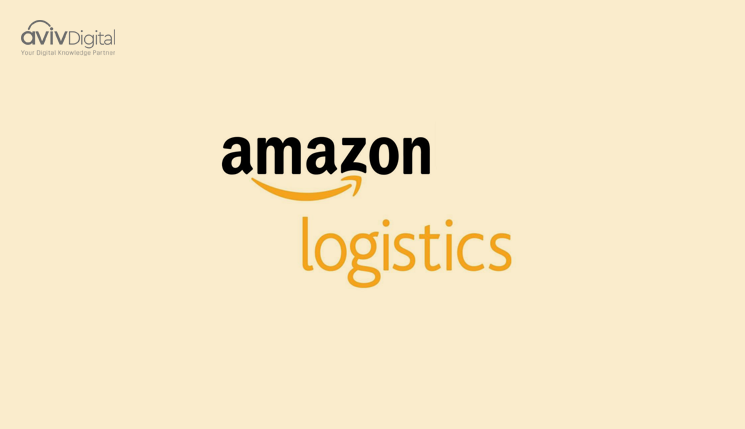
Amazon and Shopify are both popular platforms with blooming e-commerce business. Where Shopify allows the seller to create a separate platform to sell their products, add templates, include add-ons, and sell their products worldwide, Amazon allows them to establish a brand identity with millions of buyers from over the world. Both these platforms have an abundant growth opportunity for third-party sellers, and this article discusses on Shopify vs Amazon. This also tends to understand the Key Differences Between Shopify and Amazon and evaluate which is a better option for modern sellers.
What is Shopify and How Does It Work?
Let us check the first part of Shopify vs Amazon; what exactly is Shopify and how it works.
Shopify is a cloud-based SaaS online shopping solution where a monthly fee gives the member access to the admin panel from there, they can enter the store, add their products, and sell them online. Apart from this, the users are capable of choose from the amazing range of design templates and themes. The themes at Shopify are modern, clean, and Shopify also offers their users a variety of editing tools that can be used to make the theme fit with the brand identity.
Shopify is an extensive e-commerce software that allows the business to sell anything online, on the social media channels, and also in person. This all-inclusive online product selling platform allows the sellers to develop an online store from where they can sell, promote, and ship their products. This platform has been gaining popularity because of it’s easy to use interface and low cost for startup. With Shopify, it is possible for a seller to run an online business by spending as low as $29 per month, and they can bring every product or service online within a week.
Shopify is not only an excellent selling platform for local and international merchants, but it’s also more of a hub with many great advantages. What’s better is how a monthly or yearly subscription with Shopify allows the sellers to enjoy a secure and reliable hosting for their sire. The sellers don’t need to fret about their sites crashing because of high traffic or during the peak hours, or even because some hacker is trying to hijack the transactions. At Shopify, the sellers get 99.9% uptime and also free SSL certificate. This means that your website is as secured as it can be from all sort of threats against security breaches and web-traffic. You might know the importance of it as how SSL certificate affects search engine ranking.
Shopify Offers a Personalized Experience to Buyers

That’s not where the benefit ends when you are selling with Shopify because this e-commerce software platform also entitles the users to receive a comprehensive 24/7 customer support from the support center. The sellers are able to reach the support team through email, phone calls, and live chat. They can also use the personalized knowledge base which is dedicated to solving the smaller issues like profile setting, transaction history, and purchase issues. This all-inclusive platform also boasts of being an all-in-one solution because, with Shopify, the sellers get everything they need to start selling their products online.
alsoRead
What are the Pros of Shopify?

Let us check the advantages of Shopify from our guide on Shopify vs Amazon
Shopify is indeed an excellent selling platform for the merchants today. Ever since its inception, the developers have made it far more accessible with easy to use interface, and great themes and low costs. Here’s a brief list of the pros for choosing Shopify as the selling platform:
- Easy to Use: Unlike other shopping platforms, this e-commerce platform is designed specifically for technically illiterate people. Anyone can move their way around the super easy interface, find the products of their choice, add it to the cart, and make the purchase. The ease of access is similar for the sellers too, who can set up their account in no time, add the payment details, add the products they want to sell, process orders, and give discounts whenever they wish to. The website architecture design of Shopify is user-friendly and it supports the drag and drop tool which makes the buying process even more simple.
- Low Startup Cost: What drives the small businesses towards Shopify is their low startup cost. You don’t need to be a billionaire to sell your products worldwide. Shopify has made selling so convenient and so easy for the buyers. The relatively low monthly fee makes it very affordable for small businesses and sellers. The basic plan at Shopify costs about $29 per month, and the mid-level plan costs about $79 per month.
- Attractive themes and designs: At Shopify, the sellers get plenty of free themes and templates to choose from, and they can add more elements to make their selling platform more appealing for the buyers. Subscribing merchants at Shopify also have mobile responsive themes, so the people visiting your site through mobile will have great user experience too. There are a lot more options for a customized theme with premium themes.
- Lots of Support options for Shopify merchants: With Shopify, the merchants have access to plenty of technical support. They can reach the support executives and the technical representative anything during the day via phone, live chat, email. There are also plenty of self-help options where FAQs have been answered for the merchants. The sellers are able to reach the support team through email, phone calls, and live chat. They can also use the personalized knowledge base which is dedicated to solving the smaller issues like profile setting, transaction history, and purchase issues.
- Shopify is excellent for Drop shippers: What makes Shopify an excellent selling platform is how it is the platform of choice for the majority of dropshippers also there are a lot of shopify dropshipping apps. Since they have integration with Oberlo and Ordoro, the dropshipping from Shopify admin becomes a lot simpler than it can at other platforms.
Cons of Using Shopify as a Third-Party Seller

- Shopify offers the users a limited functionality: The software is pre-loaded with plenty of features which an online merchant may need to create an online store, but apart from the existing features and templates, Shopify doesn’t have features made specially to fit the specific need of the business. Since every business has a specific requirement, the limited functionality at Shopify comes as a con. This is where the add-ons come into play, and that’s why several Shopify merchants buy them to make their site more appealing for the buyers.
- The add-ons are expensive: With basic features, the site makes for an ideal shopping platform, but yet the businesses to add certain add-ons to make their site look distinctive. Add-on serves the purpose of making the site appear in sync with the product and services offered by the merchant. However, these add-ons are an expensive deal. They are not available for free, and the cost of adding a couple of add-ons will double the total monthly fee you pay to Shopify.
- The transaction fee is higher: Though the cart has somewhat dropped the transaction fee, Shopify still retains some percentage of the total amount as their transaction fee. As compared to Amazon, this fee is higher. The transaction cost, hence, comes out as one of the cons of using Shopify as the online selling platform.All these fees and expenses will add up over time, so if Shopify ends up being too pricey for you, look into alternative platforms that are comparable.
alsoRead
What is Amazon and How is it Different From Shopify?

Let us now know about Amazon, the second platform we discuss in Shopify vs Amazon.
When it is about selling products and goods online, Amazon has to be the obvious choice. More than three million merchants and third-party sellers are selling their products on Amazon. This is mainly because the site offers vast exposure of their products to the prospective buyers. Not only is Amazon a platform that bustles with millions of merchants but it is also a platform where buyers from all over the world purchase almost everything that can be shipped and delivered to their doorstep. Of course, there is some price involved in selling products through Amazon, because Amazon collects a section of the amount received on every item sold. The fee can be anything between 6 percent to 45 percent.
What makes Amazon an excellent key player is their sales and operation settings. The sales and operations planning integration represent a precise alignment between all the key stakeholders across the various business functions including the supply chain, marketing, sales, and finance. It impacts business management through continually aligning, managing, and synchronizing the supply chain, and achieving the strategic business objectives. This collaborative process, though cross-functional focuses on improving the overall business performance and aligns the supply level with the demand level. An integrated sales and operations planning in supply chain integration drives results and develops unlimited opportunities for the organizations to execute all tasks effectively. Companies like Amazon has witnessed huge benefits as a result of successful supply chain integration implementation.
Amazon’s long-term and medium forecast inform that operations management department that the organization will be required to make clear decisions and weigh the tradeoffs in a strategically different way than the other companies. Amazon’s investment policy with the sellers is consistent with their long-term forecast, and it delivers a message that they are seller focused company working to offer things that are important to the customers. Amazon will now have to decide what it wants next and target their investment and costs towards it.
alsoRead
Amazon has an Excellent Logistics Department

Amazon logistics, transportation modes, and warehouse locations impact Amazon’s third-party platform competitiveness through the investment of $1.2 billion during the establishment of their new fulfillment center in the US. They are also aiming at leasing more third-party sellers as it can help the company to save money which was spent while outsourcing DHL for domestic service in the US. Marketing and sales expert believe that Amazon will use its acquisition for better efficiency and understanding of the parcel delivery business and to seek different opportunities for innovation in shipment and delivery.
Amazon does global sources to decrease the operation cost and simultaneously improve the efficiency and work performance to foster the company’s growth. Through third-party outsource, Amazon focuses more on their customers. The global sourcing and procurement impact the overall effectiveness of the supply chain through lowered procurement pricing which is considered to be one of the most critical factors. Foreign suppliers and markets could also be a significant source of higher quality products, technology, and knowledge. The currency advantage, fluctuation of the currency exchange rate, and taxation policies in the international agreements can also be an essential factor.
The benefits which occurred when outsourcing logistic and other functions were that the business was able to ensure smooth operation and movement of goods from one place to another. Amazon required employing better quality products and latest technology procedures for the supply of products. The benefits include a reduction in the manufacturing and shipping cost and increased flexibility.
alsoRead
Amazon’s Supply Chain Consists of an Extensive Network of the Warehouse

Amazon has established its identity as a reliable retailer. It follows its competitive strategy of being the best retailer for its consumers. Amazon’s supply chain integration consists of an extensive network of the warehouse, multi-tier inventory management, highly advanced and efficient logistics, and state-of-the-art transportation. The company successfully leveraged e-commerce strategies to promote supply chain integration and boost sales and growth for the organization through a combination of its cost-cutting measures, spreading warehouses across the globe, and innovative products.
Some of the strategies that have been particularly effective for Amazon are the insourcing logistics and outsourcing inventory management. Amazon understands how depending on the third-party can lengthen the product delivery, and so it uses its delivery vehicles for the rush delivery and one-day delivery options. The push/pull strategy has also worked favorably for Amazon since it is strategically placing the warehouses and moving closer to the metropolitan and city centers (push strategy), and it is also selling products through third-party sellers (pull approach). Amazon sure sets an example for other companies to model regarding supply chain integration. The rate of innovative approaches in Amazon’s supply chain management has been inspiring, and the change has been incredible, creating a problematic competitive zone for the lower volume companies to keep up.
alsoRead
Through the various supply management integration approaches, Amazon is focusing not only on the cost reduction during the manufacturing but also on logistics and shipping. This is beneficial for customers too since they get the products are the lower cost when the product is being shipped from the nearby warehouse, and hence, these approaches have an ethical implication. Amazon’s unique integration strategies and regular technological innovation have already changed the trend of supply change management. With investment in other advances like drones, autonomous vehicles, and robotics, it’s not hard to predict what Amazon is going to bring in the future.
Pros of Selling a Product Online with Amazon

Here is the main comparison, the advantages of Amazon market place in Shopify vs Amazon.
- Amazon has crazy traffic: Given how Amazon has created a global brand identity, it is one of the largest and most popular among the best e-commerce platforms. Hence, when you sell your products as a third-party seller on Amazon, the exposure you’ll receive would be higher than any other platform can ever offer. The site has people from all over the world, and most of these people trust Amazon for making the purchase of products of their choice. Amazon also has strict policies that profit both the buyers and the sellers, and hence, it the ultimate choice for everyone.
- Amazon offers additional services: When you sell at Amazon, the job becomes a lot simpler. This is because Amazon offers plenty of additional services that make for a great deal. From packaging the product with the best quality material, handling the inventory storage and shipping the product to the doorstep of the buyers, Amazon does it all. And hence, selling the products on Amazon is the easiest things the businessmen today can do.
- Minimum Investment: Amazon has made selling so convenient and so easy for the buyers. The relatively low fee makes it very affordable for small businesses and sellers. The sellers don’t need to make an investment to sell their products on the Amazon platform. All they need to do is set up their account, add the product, and verify the payment methods. As its service fee, Amazon charges a percentage of the amount received after selling the product. This percentage varies depending on the overall cost of the product.
- A vast range of product and services: Since Amazon is the largest e-commerce platform, the product ranges and services are unlimited. The sellers today can sell services and a variety of physical goods too. This marketplace is way more flexible, and the shopping categories are extensive. Amazon further welcomes both the businesses and the individual sellers too, and the variety of tools which support the online selling and servicing the specific need of the sellers. Furthermore, Amazon has unique stores like global selling platforms and Amazon Handmade, which means that the distribution channel with Amazon is extensive too.
- Amazon Fulfilment program is a boon: This program allows the Amazon third-party sellers to access the prime buyers of Amazon and it also allows Amazon to handle everything from storing, packing, and the product shipping of the products a third-party seller is selling. Through this program, the seller sends the product to Amazon where they store the product in their inventory and ship it to the buyers as they place an order.
alsoRead
Cons of Selling a Product Online with Amazon

- Excessive Competition: With high popularity and excessive traffic to the website, comes heavy competition too. Since Amazon sells million of services and products, there is an extensive range of sellers who offer similar products and services to the buyers. As its service fee, Amazon charges a percentage of the amount received after selling the product. This percentage varies depending on the overall cost of the product.
alsoRead
Final Thoughts on Shopify and Amazon
We have now discussed on Shopify vs Amazon. We discussed the advantages and disadvantages, and the key differences between Shopify and Amazon in this guide. Let us summarize what we have gone through.
Shopify is an extensive e-commerce software that allows the business to sell anything online, on the social media channels, and also in person. This all-inclusive online product selling platform allows the sellers to develop an online store from where they can sell, promote, and ship their products. This e-commerce platform has been gaining popularity because of it’s easy to use interface and low cost for startup. With Shopify, it’s possible for a seller to run an online business by spending as low as $29 per month, and they can bring every product or service online within a week. What drives the small businesses towards Shopify is their low startup cost. You don’t need to be a billionaire to sell your products worldwide.
Shopify has made selling so convenient and so easy for the buyers. The relatively low monthly fee makes it very affordable for small businesses and sellers. Though, there are some cons like limited functionality and transaction costs. Shopify still retains some percentage of the total amount as their transaction fee. As compared to Amazon, this fee is higher. The transaction cost, hence, comes out as one of the cons of using Shopify as the online selling platform.
alsoRead
But when it is about selling products and goods online, Amazon has to be the better choice. More than three million merchants and third-party sellers are selling their products on Amazon. This is mainly because the site offers vast exposure of their products to the prospective buyers. Not only is Amazon a platform that bustles with millions of merchants but it is also a platform where buyers from all over the world purchase almost everything that can be shipped and delivered to their doorstep.
When you sell at Amazon, the job becomes a lot simpler. This is because Amazon offers plenty of additional services that make for a great deal. From packaging the product with the best quality material, handling the inventory storage and shipping the product to the doorstep of the buyers, Amazon does it all. And hence, selling the products on Amazon is the easiest things the businessmen today can do. The only con of selling products over Amazon is the high competition between the sellers. With high popularity and excessive traffic to the website, comes heavy competition too. Since Amazon sells millions of services and products, there is an extensive range of sellers who offer similar products and services to the buyers.
Hope this guide on Shopify vs Amazon met your needs. Let us know about your suggestions.
Aviv Digital is a leading Digital Marketing Institute providing the best digital marketing training in Calicut. We offer a wide range of globally recognized certification programs which includes SEO Training, SEM, SMM, Email Marketing and Inbound marketing courses. For more details, Contact us at +91 8156998844.







